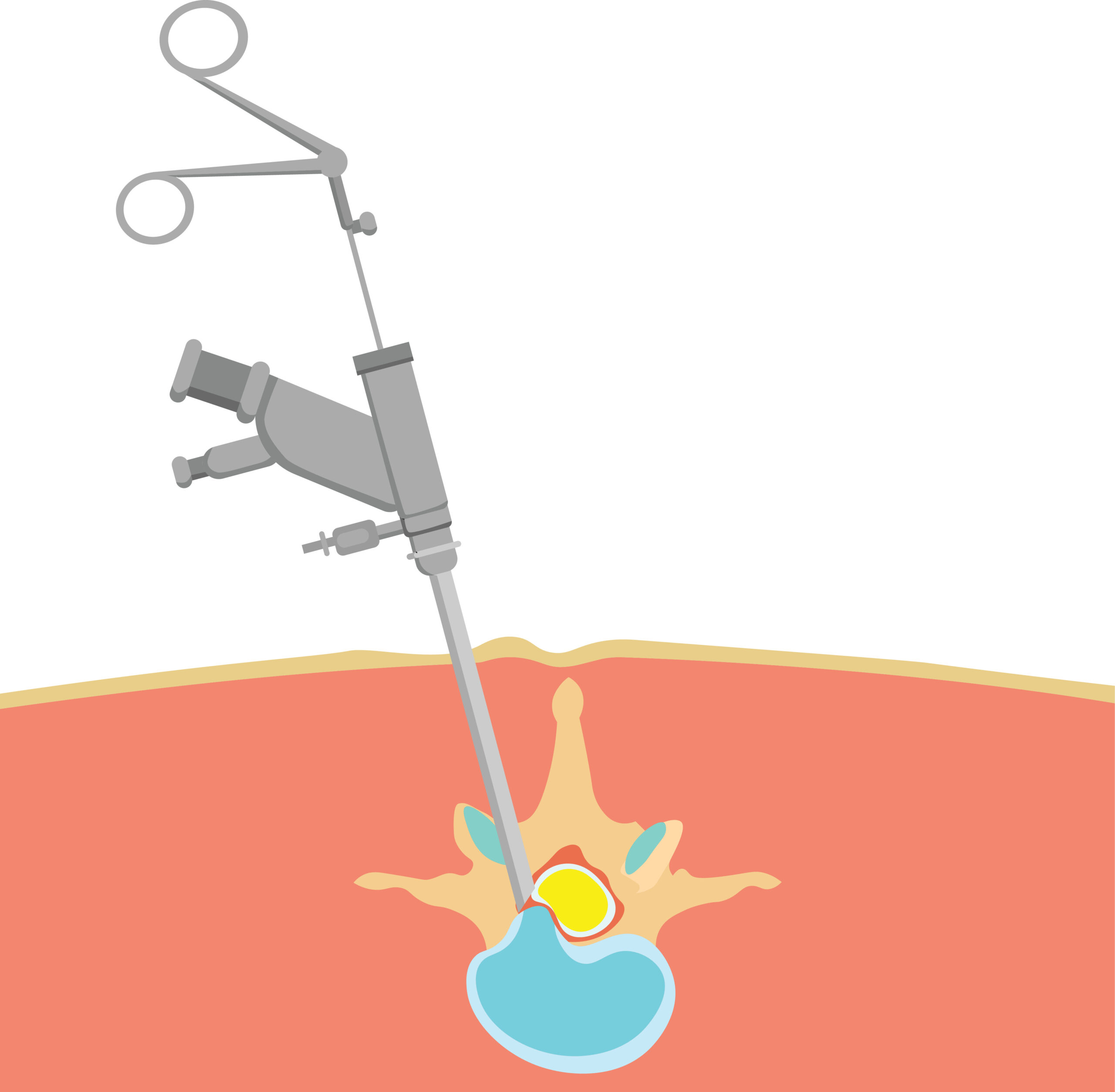Endoscopic Spine Surgery
Endoscopic surgery on the spine is a type of minimally invasive procedure done by surgeons to treat spine conditions. The advantage of this kind of surgery is that it allows for quicker recovery and fewer side effects compared to traditional spine surgery. Surgeons make smaller incisions with specialized medical instruments to conduct this surgery.
What is Involved in Endoscopic Spine Surgery?
In contrast to open surgery, endoscopic spine surgery provides access to spinal problems through a small opening to preserve tissue. This surgery involves the use of small cameras (endoscopes) and specialized instruments to reach the spine. The procedure involves minimal disturbance to surrounding muscles and tissues due to a small incision. This allows surgeons to reach disc herniations which have pressed on nerves.
Similar to surgeries done on knees and shoulders, spine endoscopy employs an endoscope to display all the anatomy to the surgeon without causing damage to healthy tissue. Physicians may choose this method to treat various spine problems through a minimally invasive approach.
Benefits of Endoscopic Spine Surgery
Endoscopic spine surgery offers several advantages over traditional spine surgery. By offering this type of surgery, surgeons and other medical professionals provide patients with:
Less Invasive Procedure: Traditional spine surgeries often require large incisions and disturbance to muscles and bones. In contrast, endoscopic spine surgery allows access to different pathologies using less invasive techniques, leading to less trauma to surrounding tissues and bones. This results in fewer complications and is less invasive compared to traditional methods.
Faster Recovery Time: Due to its less invasive nature, patients undergoing endoscopic spine surgery recover faster compared to traditional surgery. With smaller incisions and minimal muscle disruption, patients experience quicker recoveries and less postoperative pain, enabling them to resume normal activities sooner.
Success Rate: The success rate of endoscopic spine surgery is around 90%, similar or equal to that of traditional spine surgery. This high success rate and fast recovery make endoscopic surgery a better option than traditional methods.
Side Effects of Endoscopic Spine Surgery
Patients undergoing endoscopic spine surgery may experience mild side effects such as bruising, swelling, or pain at the incision site. Some patients may also feel temporary weakness, tingling, or numbness in their legs or arms. These effects usually resolve on their own within a few days or weeks.
Instruments Used in Endoscopic Spine Surgery
Endoscopic spine surgery’s minimally invasive nature is due to the instruments used by surgeons:
Trigger-Flex® Bipolar Systems: These patented navigational tools enable surgeons to address spinal pathology and remove tissue safely.
Disc-FX® System: This system helps surgeons perform discectomy procedures effectively, especially for lumbar spine herniations.
Surgi-Max Drill: Used to remove bone for visualizing the targeted pathology.
Surgi-Max Ultra: Utilizes radio frequency technology along with Trigger-Flex for treating discal herniations or pathology.
Endoscopic spine surgery offers remarkable benefits, particularly with faster recovery times, minimal pain, and successful outcomes. Patients interested in this procedure should consult their physicians to explore the suitability of this approach for their specific needs.
Ask Dr. Sharma About Endoscopic Spine Surgery
Endoscopic spine surgery is significantly advantageous. With smaller incisions and minimal muscle disruption, endoscopic procedures allow patients to recover quickly and return to their normal activities faster than they would following traditional spine surgery. Contact Dr. Sharma to learn more about our advanced tools for endoscopic spine surgery, and find out if endoscopic spine surgery is right for you.
Spine Endoscopy is currently being utilized in cases of sciatica from a disc herniation (endoscopic discectomy), decompressing spinal stenosis (endoscopic minimally invasive lumbar decompression, and endoscopic rhiotomy. This is a rapid evolving field which is bound to disrupt the spine surgery world.
References
https://www.healthline.com/health/minimally-invasive-spine-surgery#surgery-success-rate
https://www.elliquence.com/products/trigger-flex-system/
https://www.elliquence.com/products/disc-fx-system/
https://www.elliquence.com/products/microbipolar/
https://www.elliquence.com/products/bipolar-forceps/



